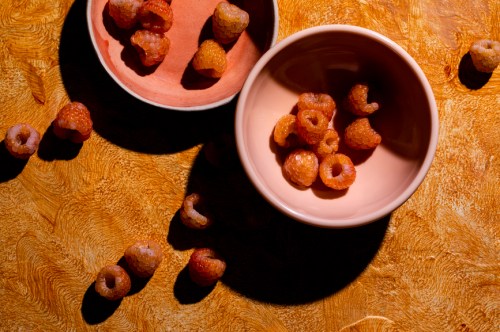Nothing can suppress an appetite faster than spotting mold on something you were about to take a bite of. Fuzzy and dark-colored, it almost looks like a weird insect is taking over your meal. Gross! While it’s not an insect, mold actually is a living organism, specifically a type of fungi. (Not any more comforting, I know.)
Experts in This Article
UK-based food scientist and CEO of Nali Consulting
registered dietitian and nationally-recognized food, nutrition, and wellness expert with a private nutrition counseling practice
“When it comes to managing mold in the kitchen, it’s all about airflow,” says Natalie Alibrandi, a food scientist consultant for Nali Consulting, adding that moisture, humidity, and light can all lead to mold growth on food. She also says that there are some foods that are particularly prone to developing mold quickly. These are the foods you want to take extra precautions with when it comes to storing correctly. Otherwise, they’re going to end up in the compost bin or trash before you get a chance to eat them.
Knowing the foods that mold quickest will help cut down on waste and also save you money. Here, Alibrandi reveals the five types of foods that mold the fastest and gives tips on how to protect them from fungi taking over.
5 foods that mold quickly
1. High moisture produce
“Anything with a high moisture content molds relatively quickly,” Alibrandi says. Since many fruits and vegetables are primarily made of water, this makes them especially susceptible. Some of the most common culprits are berries, tomatoes, peaches, plums, and mushrooms.
“When you store produce like this, you want to make sure there is no airflow hitting any moisture,” Alibrandi says. For example, with berries and mushrooms, she recommends taking them out of the plastic packaging and carton, and using a paper towel to soak up any moisture. Wrap them in dry paper towels before placing them in a sealed container to store in the fridge. The paper towels help serve as a barrier for keeping moisture out. Other produce should be stored in sealed containers to protect it from airflow and moisture as well.
2. Bread
If you really want to protect your bread from mold, Alibrandi recommends investing in a bread box. This, she explains, will keep the bread from being exposed to light and too much airflow, both of which can cause it to mold quickly. “It also helps maintain the texture of the bread whereas keeping your bread in the fridge would dry it out,” she says.
If your bread does have a little mold on it, Alibrandi says there’s no need to throw out the entire loaf. “But get rid of the part with the mold—you can still eat the rest,” she says. That said, what happens if you ate moldy bread by accident? Fortunately, the odds are not too much. Phew.
3. Cheese
Cheese mold is confusing. “There are some types of mold on cheese that if you eat it will give you a stomach ache, and then there’s some cheese mold that is okay to eat,” Alibrandi says. If you see mold growing on hard cheeses (like mozzarella or cheddar), or cheese that’s shredded or sliced, don’t eat it. “Similar to bread, you don’t have to throw it all away though,” Alibrandi says. “Just get rid of the part of the cheese that has mold on it; the rest is still safe to eat.”
As with other foods, Alibrandi says the key to preventing cheese from molding as quickly is protecting it from airflow and moisture. Coat your cheese in plastic wrap before storing it in the fridge to prolong its life.
4. Leftovers
One big reason leftovers start sprouting mold is because they didn’t cool completely off before being transported into the fridge. If steam is still coming off your food when it’s being sealed into a container, that trapped steam (which is moisture) can lead to mold growth. “Leftovers should be refrigerated in an airtight container, and your refrigerator should be set no higher than 40°F,” Samantha Cassetty, MS, RDN, previously told Well+Good. And if you don’t plan on eating your leftovers within the week, store ’em in the freezer instead, where they’ll last for months instead of days.
5. Condiments
Condiments tend to live in the fridge for months on end, but Alibrandi says they too should be checked for mold. “It’s really common for people to double-dip, using the same knife to scoop out both jelly and peanut butter, for example,” she says. She explains that not only can this lead to cross-contamination, it can also lead to bacteria being spread, which can create a breeding ground for mold. To prevent this, avoid double-dipping and make sure the lids are tightly sealed when you aren’t using your condiments.
The bottom line: Mold loves moisture, so if you want to keep food from sprouting icky-looking fungi, make sure everything is dry and sealed tightly in the fridge (or bread box). That way, every last morsel will end up in your mouth, not the trash.
Oh hi! You look like someone who loves free workouts, discounts for cutting-edge wellness brands, and exclusive Well+Good content. Sign up for Well+, our online community of wellness insiders, and unlock your rewards instantly.
Sign Up for Our Daily Newsletter
Get all the latest in wellness, trends, food, fitness, beauty, and more delivered right to your inbox.
Got it, you've been added to our email list.











